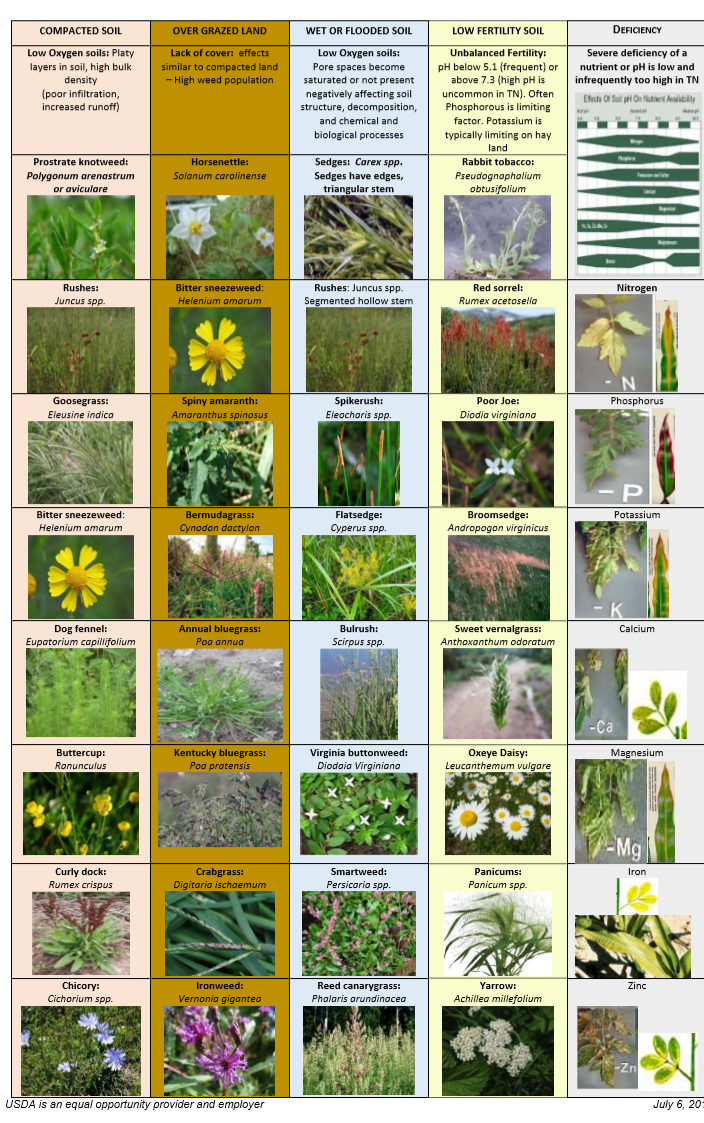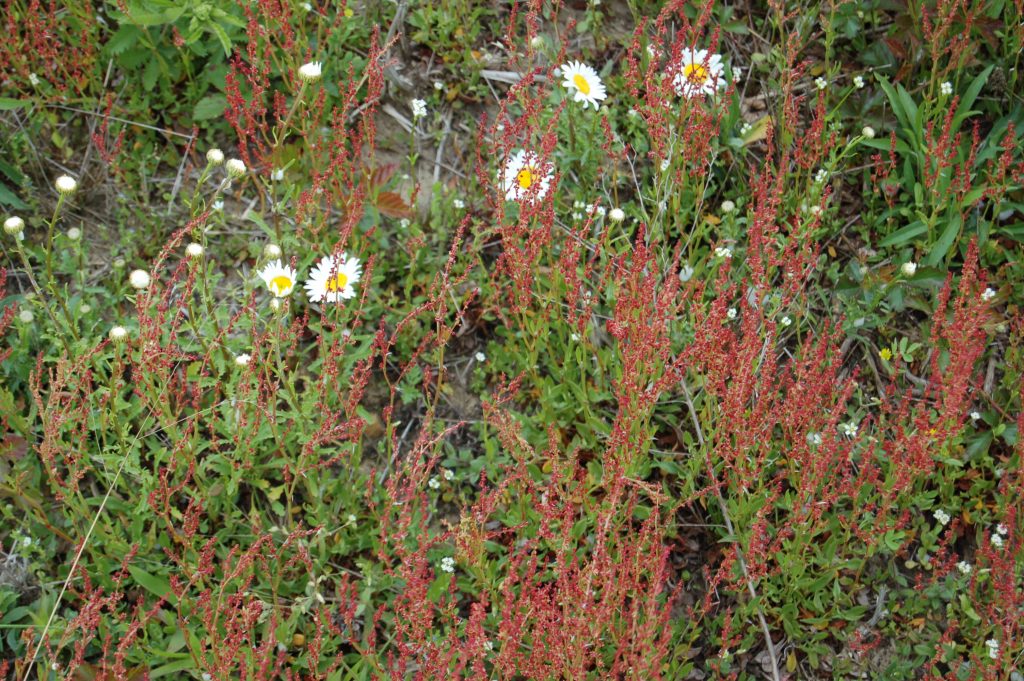
Indicator Plants

Indicator Plants are plants that, by their presence or abundance, provide an assessment of the quality of the site. Past soil management has a dramatic effect on the plant community and the plant community doesn’t change quickly so some indicator plants may persist after
management has improved. Indicator plants provide insight to what is occurring below the surface but there are many factors that come into play such as previous land use or management. These can dramatically influence seed availability on the site (e.g. – a low fertility site may still have broomsedge or rabbit tobacco on it even though fertility has improved). Soil testing, rest and recovery, more cover, increased diversity, seeding or other soil management methods may be required to alter the site to the desired state. The best weed control is out-competing undesirable plants. “Manage for what you want, not for what you don’t want. It takes grass to grow grass.”
Some Options for Mitigating Resource Concerns
The plants that grew naturally on the site are nature’s way of healing the site some of them are very palatable and others are not. If these are undesirable plants you may want to terminate existing plants
and plant a more desirable plant community that is adapted to the site.
Compacted Soil: More roots are needed fibrous and tap roots. Maintaining living roots all year helps. Allowing plants to recover longer between grazing and mowing improves root system. More residue helps. Resting plants during their active growing season strengthens plants. All plants help reduce issues with compaction but
the following plants are renowned for improving soil Compaction.
Cool season annual plants are: Forage radish and Cereal rye; perennial cool season plants: alfalfa, chicory, red clover and sweet clover.
Warm season annual plants are: sorghums and warm season perennial plants:
Native warm season grasses like: big bluestem, little bluestem, indiangrass, switchgrass and eastern gamagrass. Bermudagrass is tolerant of overgrazing and rather drought tolerant but doesn’t have as deep a root system as natives and needs nutrients for production.
Overgrazed Land: Longer recovery between grazing improves vigor of plants. If grazing skip a paddock resting a paddock for up to 90 days in the growing season and up to 210 days in the winter. Lowering stocking rate will remove stress on the the grass, soil, livestock and you. Increasing inputs such as fertilizing, feeding, number of paddocks and rotating more often leaving minimum heights of grass for soil protection, improved
infiltration, lower soil temperature and improved water management. All of these inputs reduce the impacts of overgrazing and shallow root systems. When minimum grazing heights are reached confine livestock to 20% or less of the land and feed hay till other paddocks reach a minimum height of 8” then resume grazing. It is ideal
to graze a paddock for 3 days or less, not allowing livestock to take a second bite of the same plant. In general the minimum recovery time or rest period between grazings is 14 days but base the rotation on height don’t graze below 4” (minimum of 4 layers of leaves).

Wet or Flooded: NRCS does not encourage draining land, wetlands are very important ecosystems and
aquifer recharge areas. Before draining land check with your local NRCS office you could lose USDA benefits
or be fined by other agencies. Don’t graze or travel on wet or saturated soil. Drive only in designated areas controlling traffic. If you must enter a field when it is wet walk or use an atv also wide tires compact less that narrow tires. Forage species that are adapted to wet and flooded land are: cereal rye, hairy vetch, alsike clover, red top, alsike clover, switchgrass and eastern gamagrass.

Low Fertility Soil: A plant tissue test may be in order to determine the deficiency contact the lab prior to sending in the sample. Feeding hay on low fertility relocates nutrients to the feeding site. Move or unroll hay in a new location each time you feed. High density short duration grazing improves manure distribution which improves fertility. Adjust pH to the desired level prior to applying deficient nutrients. You can move fertility in the animal as well by grazing a fertile field then rotating to one less fertile the manure dropped will be from the more fertile field. Plants, cover and roots aid in making more nutrients actively available to plants. Plants adapted to low fertility include: Cereal rye, lespedezas and native grasses.